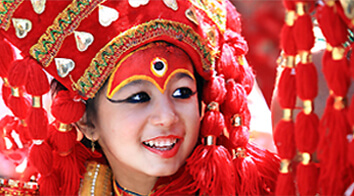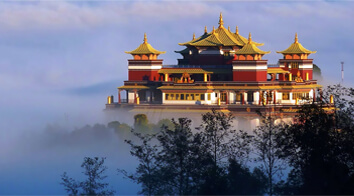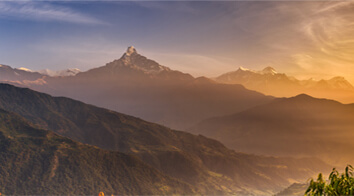According to another legend, a drought had struck Kathmandu in the early 5th century during the reign of a Lichhavi king, Vishvadeva. The astrologers present in the court suggested sacrificing a virtuous man to bring rain. The king told his son Manadeva to behead the body he finds near the royal well. To Manadeva's horror, he learned that he had sacrificed his own father. He then asked Goddess Bajra Yogini of Sankhu how to repent for his sin. The Goddess flew a bird and told Manadeva to erect a Stupa at the place where the bird landed.
Still another legend relates that the first stupa at Boudhanath was built sometime after 600 AD, when the Tibetan King, Songsten Gampo, converted to Buddhism. The king constructed the stupa as an act of penance after he unknowingly killed his father. However, Mughal invaders destroyed this stupa in the 14th century. The stupa that now stands there is more recent.
The stupa contains the remains of a Buddhist monk, or body parts of Buddha (bones, teeth), or texts and other ceremonial objects. The stupa is as high as 26 meters. It is built on a three-level mandala style platform which makes its architecture unique. 108 small images of Dhyani Amitabha Buddha surround the base of the Stupa. There is a rig of prayer wheels set in groups of four or five into 147 niches. The pilgrims go about the stupa in a clockwise direction and spin each prayer wheel. It is believed that spinning the wheel is equivalent to reciting the mantras engraved on them eleven thousand times.
The salient features of stupa architecture include the following:
- Plinth- it is the lowest level of the Stupa and represents the Earth. It is in the form of a square or terrace. The four sides represent the four states of mindfulness- love, compassion, joy, and composure.
- Kumbha- It is a hemispherical dome above the plinth. It resembles an upturned pot of rice. The dome is symbolic of water and is whitewashed every year. It is then adorned with a pattern of yellow paint to indicate lotus petals.
- Harmika- Harmika is a square tower above the dome. It symbolizes fire and is painted on each side with the eyes of Budhha.
- Spire- It represents air. It is placed on the top of harmika. The 13 levels in the tower symbolize the 13 stages of human life.
- Umbrella- It comes at the extreme top of the stupa and represents the void beyond space.
Tibetans refer to Boudhanath as Chorten Chempo implying ‘Great Stupa’. It is famous in the Himalayan region for its divine powers. The best time to visit this shrine is in the late afternoon and early evening when thousands of pilgrims walk around the stupa spinning the prayer wheels and chanting the mantras. On an evening of a full moon night, the surroundings are lit with thousands of butter lamps creating a majestic view.
To feel the holiness of the place, visit the shrine during the Tibetan New Year’s festival of Losar in February or March; Buddha Jayanti, when the image of Buddha is taken out in the procession around the stupa; when Tamangs, the guardians of Stupa come to arrange marriages and hundreds of brides inspect prospective husbands while sitting around the stupa.
Monasteries, family homes, and shops selling Tibetan drums, and other ceremonial items surround the stupa. Besides this, there are small restaurants providing a magnificent view of the stupa. You would find many foreign students in maroon colored robes walking in the streets near the stupa.





 Pashupatinath All inclusive tour package with sightseeing, hotels, meals and transportation included.
Pashupatinath All inclusive tour package with sightseeing, hotels, meals and transportation included. 
